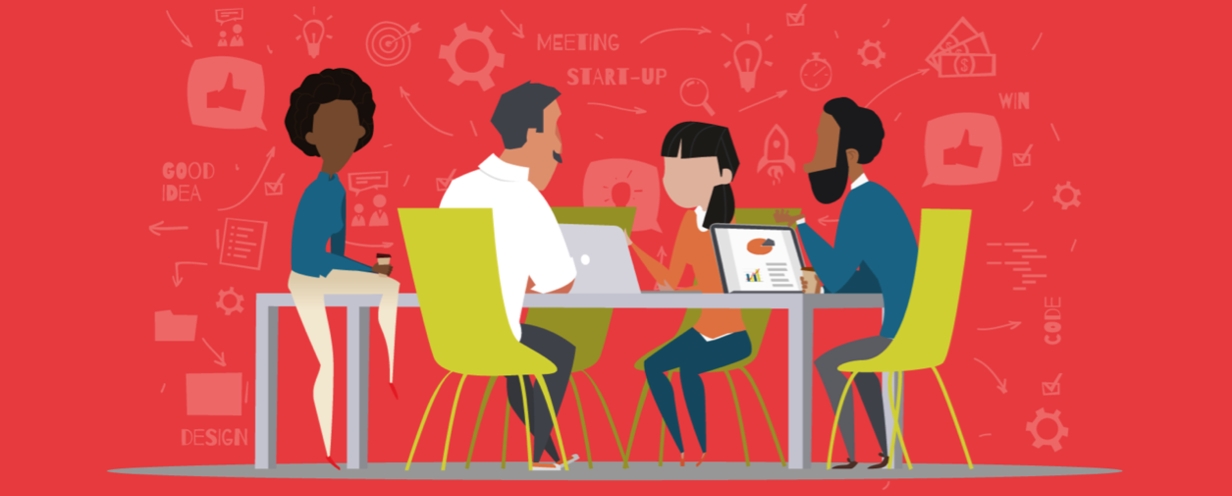
The power of workshops in the UX process

Today's guest post comes from Michal Mazur, UX Lead at Pomegranate Media. Enjoy!
User experience design is an inherently collaborative process—teams around the world are built in a cross-functional manner, as agile project management techniques are now used by over 90% of agencies. Because of the collaborative nature of UX, workshops can be an ideal way to save time, optimise communication, and generate great results as a team. The main difference between workshops and regular meetings is that you assume stuff is going to get done, not just discussed. The main value here is creating a team dynamic that will allow to you get stakeholder buy-in and avoid all of the traditional conflicts and misunderstandings. Workshops are often important milestones in projects which kick-off certain stages or become the decision-making points. Apart from making sure that meetings are actionable, workshopping provides a range of advantages to how you progress through your projects. In-house teams are often constructed of designers, researchers, product managers, developers, data analysts - all working together on solving problems. When you’re working with client teams, even more specialisations are coming into the equation. Most often they are marketers, executives, salespeople, CEOs, founders—so you need to design the workshops accordingly to your group.
Advantages of involving cross-functional team members in the UX process
Breaking down silos
The beautiful thing about making the UX design process collaborative is breaking down those invisible walls (or actual walls) between teams. Instead of handing over work or wasting time on explanations of how something works, you do the work together and keep everybody engaged and aligned in shared empathy towards the users.
Getting different perspectives
Breaking down silos has an impact not only on your workflow but also directly on the quality of what you deliver. Exploring some of the concepts and problems together provides you with synergy and the level of critical thinking only achievable when you involve people of varied expertise. A developer is never going to have the same perspective as a designer or marketer. All inputs are equally important, and taking them into account will enable you to explore the potential solutions beyond what the design team could come up with. “Every person in the workshop is there for a reason. They each have a piece of knowledge, influence, insight, compassion, or experience that will make the ideas richer and the solutions more complete. Each person needs to be aware of their responsibility to voice their ideas, and every voice must be heard and considered.” - Paula Wellings, Adaptive Path
Getting stakeholder buy-in
The design process cannot work as a black box, where you input data and something comes out at the end. It’s often hard to walk stakeholders through the whole process because they are typically business people, who may not feel engaged by qualitative, emotional concepts. But, when instead of sending deliverables via email, you involve them in the process and create things together, they will feel a part of the team and be more willing to give you the buy-in you sometimes so desperately need.
Typical types of UX workshops
During a typical UX project, there are many points and stages where using workshops can be beneficial. Here are a few suggestions for workshops that, from Pomegranate’s experience, have proven to be extremely useful.
Business requirements elicitation
At the start of any project, it’s extremely important to discuss the business implications of any activities. Often innovation will be driven by business objectives and every UX designer should have a good understanding of these objectives when designing or assessing a solution. What you want to understand in such a workshop includes:
- Business ambitions
- Objectives
- Constraints
- KPIs
- Client team structure (if applicable)
Mapping experiences
In order to see the big picture of your experience, you will need an experience map, which will help you understand the sequence of all touchpoints the company has with their customers, what the pain points are, and tasks along the way. You can either map the current experience or brainstorm new solutions to implement.
Collaborative user research review
User research is often neglected in digital projects because, in traditional business, ethnographic research was not widely used. This type of workshop allows your whole team (and stakeholders) to emotionally immerse in the world of the users and understand how important research is. Collaborative analysis means that you all spend a day or so in a room together, going through the observations you found in user research. You may even watch user testing or interview videos together. Key observations are then highlighted, clustered and interpreted together. This sort of workshop is extremely useful to build a shared level of empathy towards the end customer.
Information architecture
Information architecture should ideally be the outcome of concentrated user research; however, companies often have complex business information that needs to be shown on the website. The ideal IA workshop should involve a user researcher, information architect, the client (or internal stakeholder) and a subject matter expert as well. You can conduct a set of card sorting activities (either paper-based or using digital tools such as OptimalSort) and focused brainstorming to come up with a set of IA structures you can later test with your audience.
Design studio
Design studio workshops are co-creation sessions that involve rapid cycles of sketching ideas, presenting them, and team critique. To speed up the design process, you often need to generate a number of possible solutions in order to see the breadth of options. This sort of session is definitely fit for that use—and it’s a lot of fun seeing your CEO drawing sketches with coloured Sharpies! Todd Zaki Warfel popularised this method in the digital industry, but it’s been used for years in industrial design and architecture.
Summary
As you can see, there are many ways to introduce workshops to a design process and, even though constructing them requires effort, it’s definitely worth it! At Pomegranate, we have invested a considerable amount of time to build our workshop methodology, but even the most solid of frameworks require modification for specific projects, clients, and stakeholders. The key to designing successful workshops is planning, understanding your participants, and being flexible.





